Special Forces of the NKVD to protect the capital
Even on the first day of the war in the NKVD of the USSR, a special group was urgently set up under the people's commissar of internal affairs L. Beria to organize reconnaissance and sabotage work in the rear of the Wehrmacht. At the same time, a military unit of the Special Group was formed - a separate motorized rifle brigade of a special purpose (OMSBON of the NKVD of the USSR), whose activities are widely covered in our press. However, this was by no means the only formation of Soviet special and special forces. In the shadow of her loud glory, little-known and to this day regional units and special-purpose units of the security organs are hiding, including the Moscow Motorized Rifle Regiment of the UNKVD of Moscow and the Moscow Region.
The Germans concentrated on the Moscow direction most of their reconnaissance and sabotage forces. With the advance units of the Wehrmacht, a specially created zonderkommandand security team SD "Moscow", which had the task to be among the first to break into the capital and seize the buildings of state and party organs, arrest the leaders of the party and the state, organize the physical elimination of the Soviet and party activists. The Germans also created a special demining team, which was supposed to blow up the shrine of the Russian people - the Moscow Kremlin.
Since October 13, the fierce battles on the main operational directions: Volokolamsk, Mozhaisk, Maloyaroslavsky and Kaluga, were deployed, and on October 1941 our troops left Mozhaisk - the last city in front of Moscow in this direction. Mortal danger looms over Moscow. In connection with the approach of the front, the State Defense Committee decided to defend the capital. By a GKO resolution of October 18 on the protection of Moscow, a state of siege was introduced in October from the city of 16 in the city and the surrounding areas.
“By this time,” recalled the commander of the Moscow Military District, Colonel General P.A. Artemyev, “there were very few troops left to defend the Moscow suburbs in the Moscow garrison. The real force that could be immediately used was 25 fighter battalions formed from Muscovite volunteers. It was decided to bring them into regiments, and then into three divisions. ” One of these regiments was the separate fighter motorized rifle regiment of the UNKVD of Moscow and the Moscow Region formed just in one day, October 17, intended for reconnaissance and sabotage operations behind enemy lines in the interests of the Moscow defense headquarters and the command of the Western Front and the destruction of the most important danger to our troops at that time - fascist tanks. To solve these difficult combat missions, strong people were required physically and mentally. Therefore, the base of the regiment was the 1st and 2nd battalions, reorganized from the fighter battalions of the Comintern and Krasnogvardeisky districts of the capital. The 3rd battalion was created from the Chekists of the Moscow Department, as well as the employees of the Police Department of Moscow and the region. Employees of the regional departments of the NKVD, as well as fighter battalions of the Podolsky district of the Moscow region, Kalinin and Ivanovo regions, served as the basis for the 4th battalion of the regiment. Personnel of state security, employees of all departments of the Office of the Workers 'and Peasants' Red Police of Moscow, starting from criminal agents and ending with inspectors of the OREU, yesterday's workers and employees of various professions and ages, the 1st watch factory, and the printing house "Red Proletariat" joined the ranks. , The Radio Committee, the Council of People's Commissars of the RSFSR, the People’s Commissariat for Finance and the Board of the State Bank, the People’s Commissariat of the Food Industry, students and teachers of the Institute of Physical Education, students of the Prom Academy and even schoolchildren. The regiment commander was appointed senior assistant chief of staff of the fighter battalions of the UNKVD of Moscow, Colonel A.Ya. Makhonkov.
The command of the regiment had to simultaneously solve hundreds of questions: to engage in combat and special training, equipment, equipment and weapons, medical service, communications service, etc. Specific difficulties were added to the usual difficulties: the regiment was not provided for either by mobilization plans, or by the organizational structure of the NKVD Office for Moscow and the Moscow Region, which could not but have a negative effect on the process of its formation.
Special forces had very strict requirements. Already in the first days of November, the first fighter-sabotage groups were to go to the rear of the enemy. In total, for 20 days, the personnel had to go through an accelerated course of carrying out both military measures and reconnaissance and sabotage activities. It was planned that in the immediate rear of the enemy operational teams would operate on 15 ... 20 people. Their tasks included: conducting sabotage operations, destroying enemy personnel and equipment behind the front line (it was assumed that terror would keep the enemy in constant fear), assist in the formation and supply of guerrilla units with ammunition and ammunition, data collection.
Initially, the supply and armament of the regiment went through the state security line. Nurse T.N. Kuznetsova described the typical outfit and armament of the reconnaissance and sabotage group as follows: “We were dressed in wadded black pants and padded coats, hats with earflaps. Of weapons almost everyone had rifles, only the commander and commissioner had automatic rifles. I had RGD-33 grenades, a revolver "revolver" and a sanitary bag. Black clothing commandos explained quite simply. The lack of special equipment forced the regimental fighters to wear everything that was at hand, and not military uniform or uniform of state security officers and police were at hand, but prisoners' uniform, which was stored in large quantities in the NKVD warehouses.
Taking into account the specifics of the actions in the rear of the enemy, the fighters armed themselves with only small arms. The group was armed with: 5 ... 7 7,62-mm rifles of the 1891 / 30 model, one 7,62-mm sniper rifle of the 1891 / 30 model, equipped with the silent flameless (Silencer) BRAMIT device. Along with trine-lines, automatic weapons were used, including 3 ... 5 7,62-mm Tokarev self-loading rifles of the 1940 sample (SVT), two 7,62-mm Degtyarev light machine guns (DP) of the 1927 model, and also 2 ... 3 guns and a pulen. . And if in the fall of 1941, they were, as a rule, 7,62-mm submachine guns Degtyarev (PPD) arr. 1934 / 38 and 1940 years, which before the war were only in the NKVD troops, already from the beginning of 1942, new 7,62-mm Shpagin submachine guns of the 1941 model began to be added to the regimental units at the request of the Special groups of the NKVD of the USSR for armament of almost all, without exception, reconnaissance and sabotage groups included samples of small arms, designed to use 7,92-mm rifle and machine-gun cartridge, the same type with ammunition of the German army. First of all, it related to samples of captured Polish, Czech and Lithuanian weapons. Each group was supposed to have at least 30 percent of such weapons. In a small amount, 1 ... 2 per group, Dyakonov rifle grenade launchers were also used. The spetsnaz unit’s ammunition for 2 included F-1 or 2 manual fragmentation grenades RGD-33, 1 ... 2 anti-tank grenades RPG-40 or RPG-41. Each fighter had with him 1 ... 2 incendiary bottles of KS, or a kilogram of TNT stubs, or one anti-personnel mine.
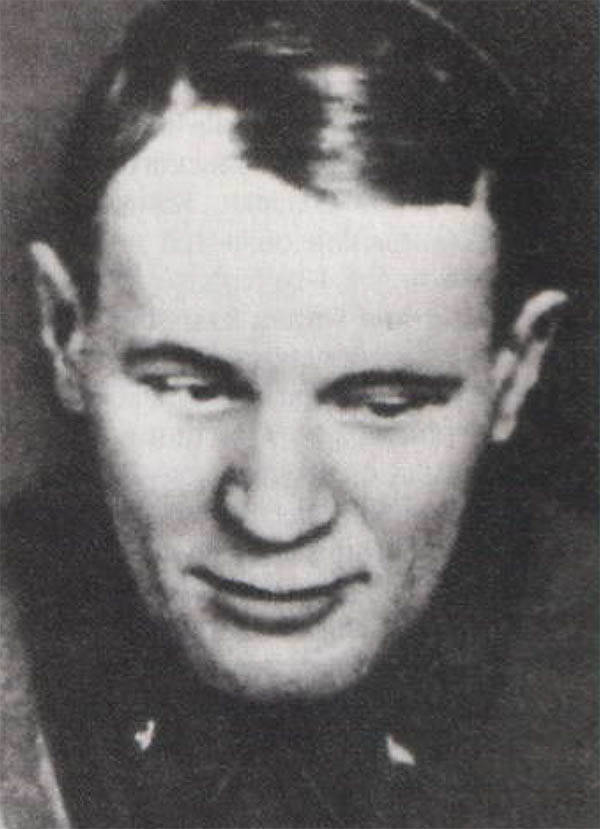
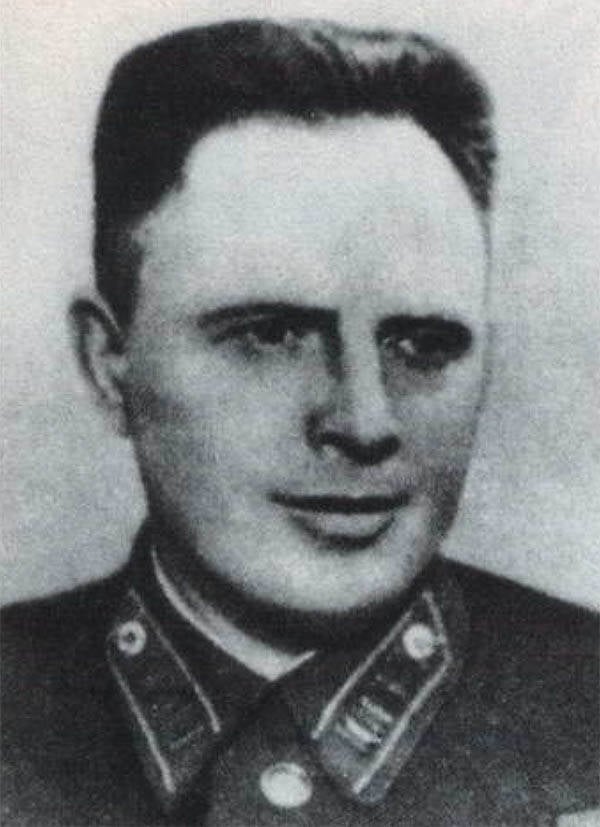
The main lack of equipment of the group was the almost complete lack of communication facilities. The few battalion radio stations that existed served only to link the regimental headquarters with the battalions. The raid groups were forced to carry out, if necessary, the delivery of reports with liaison, which significantly reduced the value of the extracted intelligence and made it difficult to manage and coordinate the activities of the operational groups from the center.
9 November, the first sabotage group of 34 fighters, led by captain F.S. Moses was sent to perform a special task. They were to act in the enemy's rear on the Naro-Fominsk and Verey directions. The group was assigned the task of destroying the strategically important bridge on the Vereya – Dorokhov road and collecting information on the German advance to the front line. Intensive training of fighters was not in vain. The combat mission was done perfectly.
However, at first it turned out not all. The relatively low military training of personnel, especially volunteers from former fighter units, had an effect. The enthusiasm of youth, not backed up by combat training and experience, often not only led to high losses, but also sometimes nullified the entire activity of some special groups. Half a century later, the fighter of the 2 Battalion, P.P. Kalmykov, recalling the attack in the area of the village of Kozhino, very frankly described his feelings and actions in that battle: “... the third night of our stay at the front came ... Morning gradually approached. The fog cleared. Right in front of us on the opposite bank of the [Moscow River], running figures of Germans began to clear up ... Our platoon commander, Igor V. Yarmoshkin ... gave the command: "Kalmykov to get to the other side of the river to the Germans” ... I’m inevitable death is near, but there is no time to delay. Only one way out: to wade in a zigzag, diving into the deep snow ... Two anti-tank grenades, hanging on the sides, dangling, held down the movement. A long rifle butt forward, tied to a belt, was dragged along. Zigzag advancement lengthened the path. Forward and only forward, I thought. That's cool. Diving under a two-meter bank, I pressed against the wall ... I was afraid that the fascist would lower the machine gun and put the whole charge into me. To the touch, removing the grenade from the belt, I tried to put the ring in place ... With great difficulty, I took my hand back and threw the grenade up ... When the grenade exploded, the fascists fled in panic. I put the rifle on the parapet and began to shoot in different directions, without sticking my head out. Comrades fled from my shore. They also put rifles on the parapet and fired from under the steep. The fascists were already far away when we climbed the steeper and rushed after them. ”
With the beginning of the second stage of the general offensive of the fascist German troops on Moscow, the fighter infantry regiment of the UNKVD began a mass transfer of fighter and sabotage groups to the rear of the enemy to attack communications on the Ruzovsky, Dorohovsky, Naro-Fominsk and Rogachev directions. Only from 15 to 18 in November, in the section of the 16 Army of K.K. Rokossovsky in the Ruza direction from the 1th Battalion, the Germans were sent to the rear of the 10 operational-KGB groups, 15-16 people each, with the task to destroy the living enemy force, headquarters units and connections, bases and supply points, nodes and communication lines. On the night of November 19, the front line on the Dorokhov direction crossed the 11 groups of the 2 battalion with the task of disrupting communications in the enemy's rear in the 5 Army action zone, several groups were ordered to sabotage the Minsk-Moscow highway. On the night of November 21, the 10 groups of the 3 Battalion were abandoned to the rear of the enemy with a mission; to act in the area of the villages of Semidvorovo, Grove, Oreshkovo, Stupino, Lucino, destroying the enemy's living force, destroying the lines and nodes of Communication, conducting reconnaissance.
In total, from 15 to 27 in November, the 51 fighter-sabotage group with a total number of 969 people was abandoned to the enemy’s rear to perform special tasks. However, it was not only behind the front line that our special forces had to meet with the enemy. A crisis situation developed at the front due to the loss of Klin, when German tanks rushed into the gap between the 16 and 30 armies. To close the breach in the defense, the Soviet command threw into the battle everything that was at hand, including the Moscow regiment of the UNKVD. The regiment task force consisting of 500, a man led by Colonel Makhonkov, took up defensive positions on the right bank of the Sestra River. The commandoes, despite significant losses, were dead for five days and did not give the enemy a single inch of our land.
5 December 1941, the Soviet troops launched their victorious counteroffensive near Moscow. A sharp change in the situation at the front entailed a change in the tactics of the special forces' actions. At a meeting with the commander of the 5 Army, Lieutenant-General L.A. Govorov, the regimental command was asked to form 16 fighter-sabotage groups to conduct reconnaissance in the rear of the enemy in the army’s operations zone.
The first December 15 crossed the front line was a consolidated detachment of 300 men under the command of the deputy. regiment commander Major I.F.Kozlov. The detachment was divided into three groups. The first cover group was headed by Kozlov himself. The second, under the command of I.V.Korolkov, was to cut transport communications north of Mozhaisk and destroy the enemy's living force. The third, under the command of Junior Political Commissar Dogin, was supposed to go to the area south of Mozhaisk and ride the roads there, causing maximum damage to the Nazis. Soon, several more large detachments from the Moscow NKVD regiment were transferred to the enemy rear. In total, from 15 in November 1941 of the year to 1 in January of 1942, 70 fighter-sabotage and operational groups were abandoned behind the front line. They destroyed more than a thousand German soldiers and officers, several dozen vehicles with manpower, ammunition, fuel, destroyed a tank repair base, a regimental headquarters, several bases and fuel depots, and obtained valuable reconnaissance data.
The expulsion of the German fascist troops from the territory of the Moscow Region made its own adjustments to the combat life of the regiment. 27 January 1942, the head of the NKVD of Moscow and the region, signed an order on the reorganization of reconnaissance and sabotage work. The regiment now became the Moscow motorized rifle fighter-sabotage regiment of the NKVD of Moscow and the Moscow region. The regiment was joined by a separate cavalry squadron of UNKVD. All the work of the Moscow security officers on sending fighter-sabotage and reconnaissance groups to the front line was concentrated only in the regiment. All fighter-sabotage detachments of the NKVD with armament were transferred to the regiment, where a separate subunit was created from them. In connection with the complication of the tasks facing this part, great importance was attached to improving the special and military training of special forces. The new commander of the regiment, Major S.Ya. Sazonov, was instructed to train the whole personnel of the regiment in the special school of the NKVD.
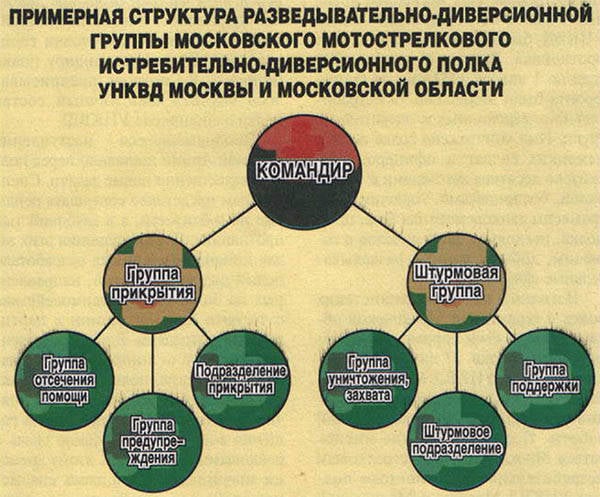
The continued offensive of the Red Army posed qualitatively new tasks for the regiment. Special groups had to make raids no longer in the neighbor, but in the deep rear of the enemy. To accomplish these tasks, the regimental command developed a whole series of measures aimed at closer interaction with the Red Army units and partisan detachments. In the immediate vicinity of the front line, the field headquarters of the regiment headed by captain M. Golovanov were created, which significantly increased the efficiency of resolving issues and improved communication with road groups. By this time, the supply of the regiment with all necessary things had significantly improved, starting with weapons and finishing with equipment.
Has undergone certain changes and tactics of action of special groups. During the six months of fighting, the men of the Moscow regiment of the NKVD perfected various methods of warfare. In view of the combat experience, the following priority was developed in conducting combat operations in the enemy rear.
First of all, unprotected sections of highways and railways, oil refineries and power plants, telephone and telegraph lines, communications centers were attacked.
The objects of the second stage were poorly guarded bridges, ferries, ammunition depots and fuels and lubricants, car parks, etc.
Further, the enemy's manpower was listed: individual sentries, small convoys and columns, calculations of individual guns or crews of combat vehicles in firing positions, small units for the protection of headquarters, airfields, etc.
And only in the most extreme cases were open warfare allowed against an adversary capable of repelling an attack: by garrisons or military units on the march.
However, the specifics of the actions of the special forces were precisely to avoid open combat. Therefore, when attacking a military convoy, they, as a rule, resorted to a sudden fire attack from close and medium distances that did not exceed 400 ... 500 and sought to select the most vulnerable units for this: staff or rear.
In mid-February, the regiment intensified its operations in the Vyazma sector. The 18 special group totaling 673 man was abandoned.
In March, the 42 th regiment's operations were moved to the territory of the Smolensk, Kalinin and Bryansk regions. 25 April deputy. People's Commissar of Internal Affairs of the USSR B. Kobulov instructed the head of the NKVD of Moscow and the Moscow Region Zhuravlev to prepare for the 5 in May of the 10 individual regiment detachments for long-term operations in the rear of the enemy. It was prescribed: all personnel must be trained and trained to carry out demolition work, 5 ... 7 fighters and junior commanders prepared for organizing new partisan detachments from the local population should be included in the composition of each detachment. After preparing for the new program at the end of May 1942, a consolidated battalion of a regiment of 500 men was sent to the raid on the enemy’s rear in Bryansk. The main tasks assigned to the commandos by the commandos were to activate the “rail war” and conduct sabotage activities in conjunction with local guerrilla units. One of the tasks of the battalion was to assist the removal of the units and subunits of the 1 Guards Cavalry Corps from the environment, Major General P.A. Belov and several airborne brigades. A significant part of the fighters and commanders of the cavalry corps and paratroopers was withdrawn from the rear of the enemy by the reconnaissance and sabotage groups of the Moscow special forces.
In the days of the heroic defense of the capital and the counteroffensive of the Red Army near Moscow, the motorized rifle fighter and sabotage regiment of the NKVD made its worthy contribution to the defeat of the German troops. The 135 special groups of the regiment, more than four thousand people, carried out special tasks of the command of the Western Front in the rear of the enemy in Zvenigorod, Borovsky, Ruza, Vereisk, Dorohovsky, Rogachev, Naro-Fominsky, Klin, Mozhaisk and other districts of the Moscow Region, as well as in the territories of Kalinin, Smolensk and Bryansk regions. The special forces destroyed more than five thousand enemy soldiers and officers, detracted several dozens of trains with manpower and equipment of the enemy, destroyed headquarters, warehouses, bases, bridges, communications, obtained intelligence information, helped organize and arm local partisan detachments in the temporarily occupied territories.
In connection with the fulfillment of the tasks of the NKVD regiment and the complete liberation of the territory of the Moscow region by order of the Main Directorate of Internal Troops of the NKVD of the USSR from 26 June 1942, the Moscow motorized rifle fighter-sabotage regiment of the NKVD of Moscow and the Moscow Region was transformed into the 308 th infantry regiment of the internal troops NKVD of the USSR. 12 August 1942, the fighters and regimental commanders bade farewell to the capital, which they steadfastly defended on the most critical days of 41. Moscow will forever preserve the memory of more than five hundred Moscow Special Forces troops who gave their lives for it. The fighters and commanders of the former Moscow NKVD regiment still had to go through fierce battles in the Caucasus, defending the city of Grozny, breaking through the Blue Line as part of the 1 Special Infantry Division of the NKVD USSR special forces (later the Special Purpose Division named after Dzerzhinsky), in which the regiment lost more than 3 / 4 personnel.
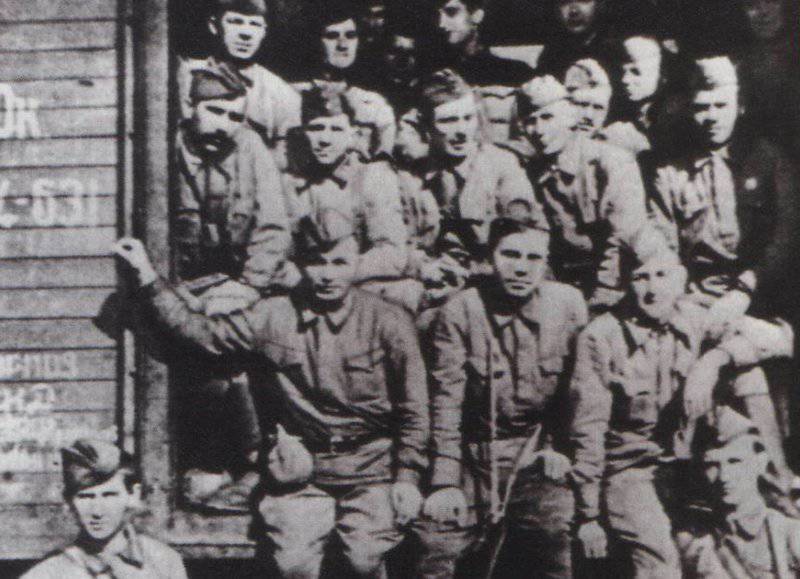
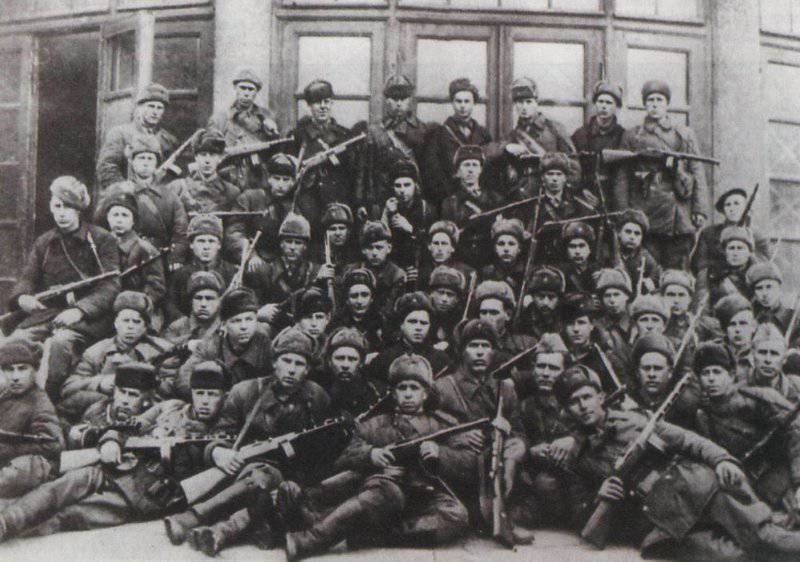
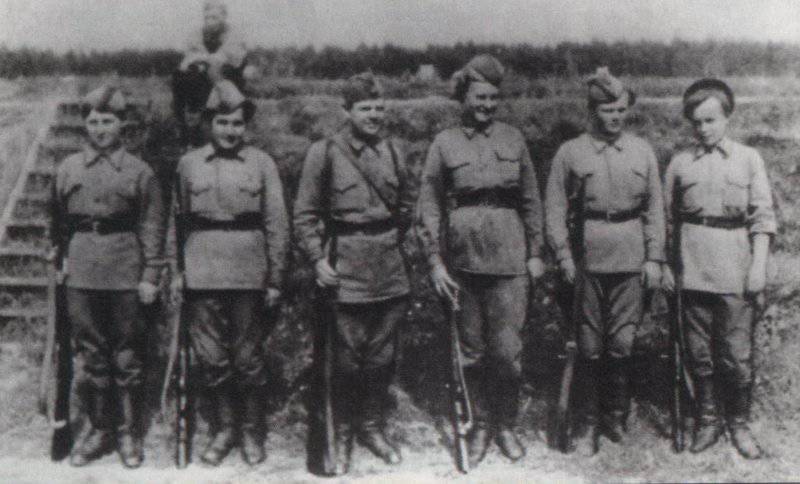
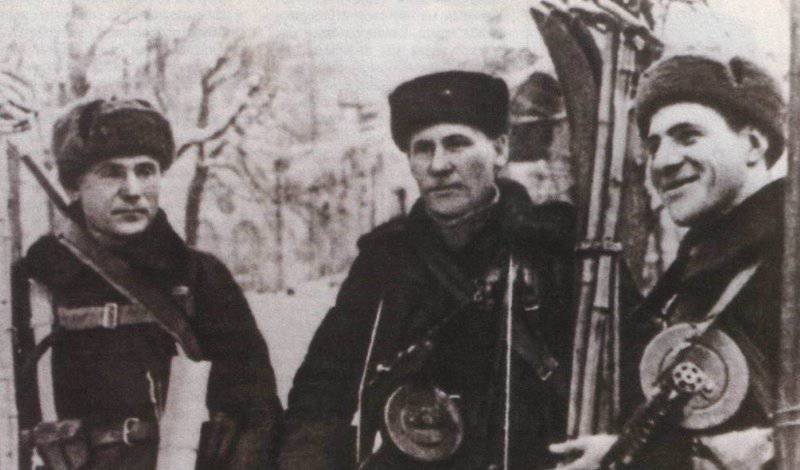
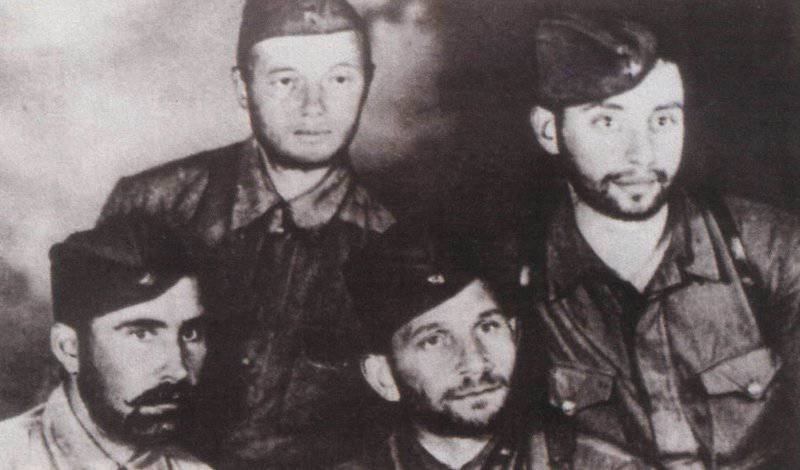
Information